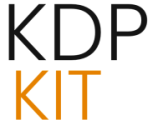
Maximizing the Utility of Secured Reviews: The Post-Acquisition Lifecycle
The work does not end when a reviewer posts their verdict; that moment marks the beginning of the crucial asset utilization phase. A single, credible review is not just validation; it is measurable marketing currency that must be actively mined and deployed across every relevant channel. You have successfully converted a reader’s time into an asset; now, you must maximize its return on investment.
Syndication Protocols: Where and How to Post Secured Review Assets
A positive review is a powerhouse asset, and it should never be allowed to exist in only one place. Authors must systematically distribute positive quotes across multiple channels. This is known as review syndication, and it needs to be systematic, not haphazard.
Create a checklist for every significant review you receive:
A single glowing review, when displayed in five different strategic locations, effectively acts as five different advertisements, all carrying the implied authority of an independent source. Don’t let that currency sit idle.
Incorporating Positive Feedback into Retailer Product Pages for Conversion Optimization
This is where marketing meets psychology. The goal of your sales page copy is conversion—turning a browser into a buyer. The best way to do this is by incorporating testimonials that speak *directly* to a reader’s known pain points or desires within your genre. The algorithm has shown you what readers want; now use their own words to sell to the next reader.. Find out more about Submitting indie books to Publishers Weekly editorial review guide.
Look for quotes that hit emotional or concrete benchmarks. For example, a quote like, “Kept me up until 3 AM reading,” speaks directly to the desire for an engrossing plot. A quote like, “The best historical research I’ve seen since Hilary Mantel,” validates the reader looking for authenticity. These phrases should be strategically integrated into the book description or the comparison sections often displayed near the cover image or within the “Look Inside” preview feature.
Imagine your description: You start with your hook, then you drop in one of these perfectly phrased testimonials—perhaps in italics or bolded—before continuing your own description. This creates a rapid, positive validation loop for the scanner. They see the book’s premise, and immediately, a trusted voice confirms that the book delivers on that promise. This tactical placement maximizes conversion rates from casual browser to committed buyer far more effectively than abstract claims of quality.
The Importance of Acknowledging and Thanking Reviewers Authentically
Once a review is live—whether it’s a five-star rave or a thoughtful two-star critique—the author must immediately send a sincere note of thanks. This simple act is often skipped by busy authors, which is a huge mistake. A genuine acknowledgment validates the time the reviewer invested, which is often significant for a detailed review.
Your thank-you note should be specific, but brief. If they praised your world-building, mention that: “Thank you so much for taking the time to review *The Last Watchman*. I’m thrilled you connected with the atmosphere of the city; that was a major focus for me.” Gushing praise is unnecessary and can feel inauthentic. Genuine appreciation for their time and specific feedback is sufficient. This small gesture solidifies the relationship, drastically increasing the probability that the reviewer will support your next project, or even become an early advocate for your backlist titles.
Using Review Testimonials in Ongoing Marketing Campaigns and Ad Copy. Find out more about Competitor analysis for identifying book reviewers tips.
The final step in utilizing secured reviews is transforming them into the backbone of your ongoing advertising creative. Quotes from credible reviewers—especially those that mention specific strengths—are superior to anything you can write about your own book in an advertisement. Why? Because the credibility of the source transfers to your ad.
These phrases form the basis of effective ad copy on platforms like Meta (Facebook/Instagram) and potentially even search engines. Utilize these phrases in your social media ad copy, particularly when targeting lookalike audiences—people who share demographics with your existing readers. The copy can look like this: “Tired of predictable fantasy? [Reviewer Name] says: ‘A breath of fresh air in epic fantasy, this one surprised me at every turn.’ See why!”
This leverages the authority of the source to persuade new potential readers who are entirely unfamiliar with your name. It’s social proof deployed surgically via paid media. Always use the most impactful quote that also aligns with the specific audience segment you are targeting. If you are targeting readers who like fast pacing, use the quote mentioning pace; if you are targeting those who value character depth, use the quote focused on character arcs. This level of optimization ensures your ad spend is working harder by using verified reader endorsement.
Sustaining Momentum: Embedding Review Generation into the Long-Term Author Strategy
For the modern independent author, receiving reviews is not simply a launch-day activity; it is a continuous operational requirement for maintaining visibility in a perpetually crowded digital marketplace. The algorithms on retailer sites favor books with recent activity. If your last review was six months ago, your visibility will naturally wane. The process must be continuous, systematic, and integrated into your entire publishing cycle.
Implementing a Continuous Review Generation Loop for Backlist Titles. Find out more about Ethical boundaries for indie author review exchange strategies.
The streamlined process you establish for a new release—the ARC team, the targeted outreach—should be repeatable, but successful authors also build systems to solicit fresh reviews for their existing backlist. Those older titles, your foundational income stream, often suffer from review stagnation. They need revitalization.
How do you generate new eyes on an old book? You create a temporary reason for new readers to pick it up. This often involves running targeted, short-term price promotions—perhaps dropping a perennial backlist title to $0.99 for a week, or making a sequel available free for a limited period *specifically* to attract fresh reader feedback. The goal here is not necessarily profit during that promotional week, but the resulting influx of fresh reviews and sales velocity that re-energizes the book’s digital shelf presence. A book with 200 reviews from 2022 is less attractive than the same book with 220 reviews, including a handful from the current quarter. This is about signal boosting your established assets.
Creating an Author Website Call-to-Action Focused on Reader Feedback
Your author website must serve as the central, owned hub of your entire digital presence. Therefore, it must feature a clear, prominent, and compelling call-to-action (CTA) that encourages readers who have *finished* the book to leave a review on their preferred platform. Do not assume they know what to do next.
Reduce reader inertia to zero. Instead of just saying “Please leave a review,” make the process incredibly simple. Feature prominent buttons or links that direct readers straight to the review submission page on Amazon, Goodreads, or The StoryGraph. For example, use a clear button that reads: “Share Your Thoughts on Amazon Here.” By linking directly to the review portal, you eliminate the steps a reader would have to take to find your book and open the review form, drastically improving completion rates.. Find out more about Goodreads genre-specific review targeting strategy overview.
Furthermore, consider segmenting your CTA based on reader preference—maybe one button for “Amazon/Retailer” and another for “Goodreads/Tracking.” You are catering to the habits you identified in the previous section, making it easy for every type of reader to satisfy their need to give feedback on their preferred turf.
The Role of Post-Publication Engagement in Encouraging Organic Review Flow
Even after the initial launch window has closed and your formal ARC team has submitted their feedback, your engagement with readers must continue. This subtle, ongoing interaction can prompt those passive readers who intended to review but never got around to it. The key is to keep it light, conversational, and non-demanding.
If a reader posts a casual comment on your social media saying they just finished your book, engage with them. Ask light, fun questions related to the story: “I’m so glad you finished it! Out of curiosity, which supporting character did you find the most suspicious?” or “Did you notice the subtle nod to that classic film in Chapter 12?” These light questions transform passive readers into active promoters. They feel seen, they engage with the material again in their minds, and often, that gentle jog is all it takes for them to click over and leave the review they meant to write weeks ago. You are using conversation to organically generate more social proof without ever sounding like you are asking for a favor.
Future-Proofing Your Process: Adapting to Emerging Review Channels in the Coming Years
The digital environment shifts with breathtaking speed. What is dominant today—Goodreads, The StoryGraph—might be superseded by a new platform tomorrow, perhaps one tied to AI-driven recommendations or entirely new social video formats. Successful independents must maintain an active awareness of emerging book discovery platforms, new social media features, and changes in editorial policy from established outlets.. Find out more about Submitting indie books to Publishers Weekly editorial review definition guide.
This requires dedicating a small, regular slice of your administrative time—perhaps one hour per week—to simply monitoring the landscape. What are BookTokers talking about that isn’t on BookTube? Is a new reading app gaining traction among younger demographics? Are major publications changing their submission requirements for indie authors? Your review strategy must remain agile. A static approach guarantees obsolescence in this marketplace.
The ultimate goal is to build a flexible framework that allows you to quickly pivot and integrate a new high-value review channel the moment it becomes credible, much like the rapid adoption of The StoryGraph’s analytical features when they first became essential in the early 2020s. Future-proofing your process means embedding this adaptability into your long-term operational strategy. This diligence ensures your review generation pipeline remains effective for the long haul of your entire writing career.
Conclusion: Making Every Verdict Count
The twenty twenty-five reading market demands a multi-layered review strategy. Gone are the days when book bloggers were the sole gatekeepers. Today, visibility is earned through a dual approach: mastering the granular data and passionate community on platforms like The StoryGraph, while simultaneously respecting the established, authoritative weight of trade editorial curation through channels like BookLife for Publishers Weekly consideration.
The actionable takeaways are clear:
Your reviews are more than just critiques; they are the social proof, the market data, and the distribution leverage you need to thrive. Are you ready to move beyond the blogosphere and master the hub where readers truly decide what to read next? Start auditing your outreach list today—because the next great review is waiting to be discovered by an author who knows exactly where to look.





